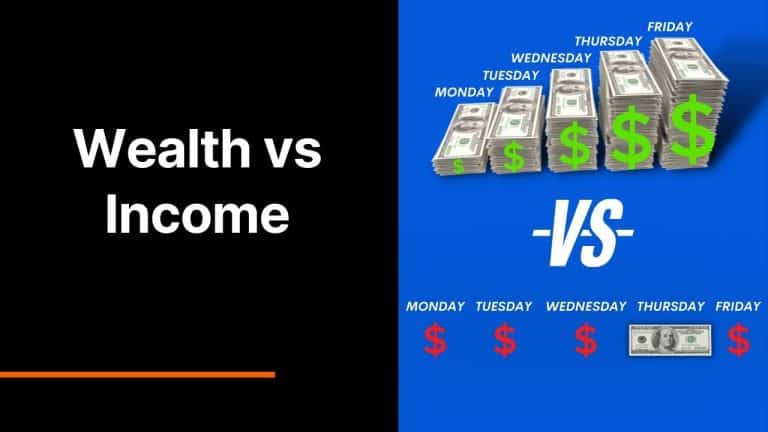Comprehensive Financial Planning and How to Create a Plan
Success with money requires comprehensive financial planning.
Because without a great financial plan in place, you won’t know what to do with your money. Or tell it exactly where it should go.
It’s like if you want to become a successful athlete or musician, you need to have a plan in place from the start. You have to set goals for yourself and practice a lot.
Another example is if you want to be healthy.
If you do, all aspects of your health are important. You should not only focus on weight loss and doing a bunch of cardio. You also need good sleep and a healthy diet to go along with all the workouts you’re doing.
The same goes for your money.
You need a comprehensive and holistic financial plan. This type of planning includes everything from budgeting, insurance, to saving for retirement.
What is Comprehensive Financial Planning?
Comprehensive financial planning is looking at everything going on in your life money-wise. And it isn’t something only wealthy people do.
Creating a plan for your financial future is something everyone can and should do.
You can do this by taking a look at all the places where money is coming in, and where it’s going out.
Doing a financial analysis is a good way to find out your true financial standing. And it can help you create a plan that works best for you and your situation.
Because a solid comprehensive financial strategy is like a health and wellness plan. It’s an ongoing process.
But creating one will reduce your stress about money, and support your current needs while you continue building your long-term goals.
Elements of a Comprehensive Financial Plan
A comprehensive financial plan involves:
- Reviewing your current financial situation
- Understanding and discussing your long term goals
- Creating a plan that’ll take you from where you are to where you want to be
Your comprehensive financial plan should include plans for retirement, debt, taxes, your family, college, insurance, and other
When making a plan knowing goals and having a good understanding of your current situation helps. Start by taking a look at your bank statements, tax returns, insurance policy, current
Because you can’t develop a solid financial plan without understanding, assessing, and addressing different areas of your finances.
You need to understand your entire financial picture.
What If I Don’t Have a Comprehensive Financial Plan?
If you don’t have a plan for your money, you’re living an unstable financial life. And more likely to overdraw money from your accounts, carry credit card debt and pay your bills late.
Many of us can’t pay for an unexpected bill of $500 or $1,000. So do everything you can to NOT live this type of financial life. It’s a stressful way to live.
But how can we prevent ourselves from living like this?
We should focus on developing three things. First, we need to set aside some spare money.
One way is by limiting our monthly
Saving money will also give us a nice shot at spending less than we earn. And allow us to save more for the future.
Because good savings habits are important if you’re trying to build wealth. Saving and
After you’ve saved up enough money we then need to look at our spending habits. Limit or don’t make impulse purchases. Instead, try spending less money on clothes, electronics, entertainment, and restaurants.
And before making a purchase, pause and consider whether what you’re going to buy is a good use of your money. Ask yourself, can I afford this?
If not and you don’t have enough cash to buy it at least twice, well… you can’t afford it. And if you can’t say no and resist the urge and are still going to buy an item, don’t buy it on a credit card.
Use your debit card or cash.
Finally, comprehensive financial planning is about creating better long-term financial habits. This includes not only saving money but also paying your bills on time. And keeping an eye on your checking account balance and investments.
This will help us avoid late fees, prevent bounced checks and make sure our money is growing when invested.
How to Create a Comprehensive Financial Plan
1. Set Some Financial Goals
Your financial objectives are the basis for your financial plan and life. Think of your money and what it can do for you.
- Do you have enough money for financial freedom?
- Can you buy a house or rental property?
- How much time do you have before you need to get a job?
Because when you have financial goals in mind, you’re more likely to save and invest your money.
And any financial goal you set for yourself should inspire you. They should get you excited and help motivate you to get off your ass and take action.
2. Start Budgeting
A budget is you telling your money where you want it to go. It lets you spend more money on the things you want. And less money on things you don’t care about.
Budgeting paints a picture of your monthly cash flow by documenting what’s coming in and what’s going out. If you don’t currently have a budget, give it a try. Every financial plan needs to have a budget.
Use a budgeting app or sit down and write out a 50/30/20 budget.
Where 50% of your after-tax pay goes towards your monthly needs. Think housing, rent, light, water, transportation, and other recurring
Then 30% of your money goes toward your wants like food, clothing, and entertainment.
And finally, the last 20% goes towards your savings and any debt repayment.
3. Create an Emergency Fund
A good financial plan starts with saving money for emergencies. You can start small by saving $50 until you have enough saved up to cover an emergency.
That way you don’t have to use a credit card or borrow money when an unexpected expense happens. It’s generally recommended you have 3-6 months of living expenses saved up.
If you don’t have 3-6 months of money set aside it’s okay. Saving up even one month of living
4. Always Get Your Employer Match
If you have an employer-sponsored retirement plan like a 401k, and your employer matches your contribution, get the match.
Your 401k match is free money.
Even if you don’t want to invest in a 401k. It’s always worth it to put in enough to get the full matching amount from your employer.
I repeat. Even if you don’t want to invest in your 401k, you should contribute enough so the company matches it.
5. Pay Off High-Interest Debt
An important step in any comprehensive financial plan is paying down high-interest debt. Think of credit cards, car loans, and student loan debt.
Credit cards and car loans can generally be paid off in three to five years.
Student loan debt is a long-term commitment. But if you’re making payments on these it’s worth paying them down as soon as possible.
Because if not, a high-interest rate on your loans might be so high you end up paying two or three times what you borrowed.
And if you’re having trouble paying off your debt, consider taking out a debt consolidation loan. You might be able to combine several bills into one monthly payment at a reduced interest rate.
6. Invest Your Money
Investing may appear to be a game reserved for the rich or those who are already doing well in life.
But nope, it’s for you too.
investing.
And a comprehensive financial plan uses more than one investment vehicle.
For example, most comprehensive financial plans include cash, stocks, real estate, and bonds. Because it’s a great idea to have different investments vehicles. Each vehicle allows your money can grow in some areas while others remain steady over time.
And this comprehensive approach helps you avoid risky decisions. Like
Diversification matters.
Here are some of the best investment vehicles:
- Employer-sponsored retirement plans. If you have a 401(k), 403(b), or TSP plan, increase your contributions toward the IRS limit. But always get your employer match
- Traditional or Roth IRA. These tax-advantaged investment accounts can further build retirement savings. Consider a Roth IRA if you’re young and your
income is low.
- HSA (Health Savings Account). This is a tax-advantaged savings account. It’s used for qualified medical
expenses . But you can also invest the money you have in your HSA, and withdraw it tax-free when you’re ready.
7. Protect Your Wealth
Protecting your wealth is the comprehensive part of comprehensive financial planning.
This includes having enough money set aside to protect yourself if you have to live off of your emergency fund for a short period of time. Or pay long-term care
Because holistic financial planning is about being prepared for the unexpected. Protecting yourself includes purchasing life insurance, disability insurance, and health insurance.
Every financial plan needs to include insurance
You need the insurance to defend yourself and your family from any financial setback because no one plans on being disabled.
But life, accidents, illness, and car crashes happen. Disability and life insurance protect your ability to earn an
With Comprehensive Financial Planning, The Focus is on You
“Holistic financial planning” is the same as “comprehensive financial planning.” It looks at considers many different things, like investing, taxes, retirement, and insurance.
It’s a top-down approach to financial planning. And it focuses on your long-term objectives and beliefs.
Rather than a one-size-fits-all approach.
The emphasis with this type of financial plan is on you. Because money is already complicated enough. Managing your money and assets to accomplish your goals in life shouldn’t be.
And a comprehensive financial plan puts money to work for you. Having a plan in place protects you from any possible setbacks.






